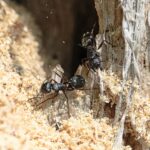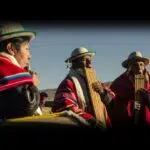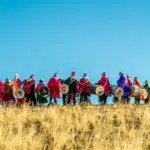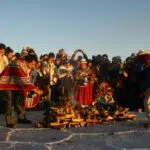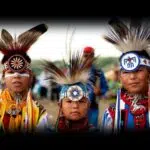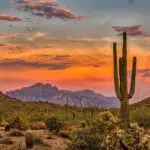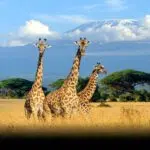National Grasslands Week is usually celebrated in the third full week of June. It takes place from June 21 to 27 this year. The aim is to appreciate the natural beauty and historical significance of the U.S.D.A. Forest Service’s 20 national grasslands spread throughout 12 western states in the U.S. In addition to offering a wealth of wildlife habitat and outdoor recreation possibilities, the nation’s grasslands also serve as a vital support system for the country’s farms and ranches. Celebrate the grasslands all over the nation today by visiting them or making a donation to help keep them maintained.
History of National Grasslands Week
Grasslands are vast, flat stretches of land found on all continents except Antarctica. The most extensive natural grasslands are intermediates between forests and deserts. Forests thrive in damp, humid places with a tall, dense canopy of trees. Tropical grasslands, which often sit between tropical forests and deserts, and temperate grasslands, which generally fall between deserts and temperate forests, are the two greatest areas of natural grassland. Tropical grasslands and savannas share many similarities, and the differentiation between them is based on the number of trees present. Similarly, temperate grasslands may include a scattering of shrubs or trees that confuse their boundaries when near scrublands or temperate forests.
Tropical grasslands are found mostly in the Sahel, East Africa, and Australia. Temperate grasslands are found in North America, Argentina, and a large stretch from Ukraine to China. However, agricultural activities have significantly altered most of these locations. Deserts occur where there is insufficient precipitation to support a continuous vegetation cover. Grasslands sit between these two extremes.
Grasslands are filled with intriguing animals and flora. Even in the severe Arctic climate, healthy grasslands support a great variety of plants and animals. Everything in this vital biosphere is interconnected, right down to the soil.
National Grasslands Week timeline
Congress passes the Homestead Act to encourage settlers to move into the still largely unpopulated West on 160-acre plots of land.
The federal government, under the Land Utilization Program, purchases more than 11 million acres of unsuitable farmland for planting trees, building water infrastructure, and seeding grassy regions.
U.S. federal authorities declare certain areas national grasslands.
The Midewin National Tallgrass Prairie in Illinois becomes the first national tallgrass prairie in the U.S.
National Grasslands Week FAQs
What types of threats do grasslands face?
The loss of grassland habitat, which can be brought on by human activities such as unsustainable agriculture practices, excessive grazing, and crop clearing, is a major danger to grasslands.
What sets grasslands apart from other ecosystems?
The grass is the predominant vegetation type in temperate meadows. There are no huge trees or plants to be found here. Temperatures change more from summer to winter in temperate grasslands than in savannas, and the amount of rainfall is lower.
What kinds of natural disasters are grasslands vulnerable to?
U.S. grassland ecosystems will be affected by more severe and more frequent drought, flood, fire, and hurricane events in the future.
National Grasslands Week Activities
Educate yourself
Do some research on the internet or in a library to find out more about grasslands and their importance. You can also use the week to educate other people as well about the significance of grasslands.
Visit the grasslands
Several grasslands will participate in National Grasslands Week. You can go on any day during the week to visit at least one or several if you have the opportunity.
Make a donation
Donations can be made to grassland conservation organizations to help them continue their efforts. You can help save the grasslands by doing this.
5 Interesting Facts About Grasslands
Animals live in temperate grasslands
Prairie dogs, badgers, coyotes, fast foxes, and a wide variety of birds can be found in temperate grasslands.
African savannas
In the African savannas, for example, zebras, wildebeest, gazelles, and giraffes all rely on vegetation for their survival.
Rainfall varies
The yearly rainfall in grasslands might vary from 10 to 40 inches from year to year and from season to season.
Different names
In the U.S., people call grasslands ‘prairies;’ in South America, they’re known as ‘pampas;’ in Russia and Ukraine, they’re known as ‘steppes;’ and in Africa, they’re known as ‘African savannas.’
Grasslands cover a significant portion of Earth
Grasslands make up a significant portion of the planet’s terrestrial landscape, accounting for 37% of its total land area.
Why We Love National Grasslands Week
Domestic animals
Human welfare can be enhanced in a variety of ways by using grassland products directly. These items can be gathered, consumed, or sold. Domestic animals have relied on grasslands for nourishment for millennia, whether it's in the form of raw grass or hay throughout the winter.
Food production
Global food production relies heavily on ruminant milk and meat produced in grasslands. To feed the world’s growing population, additional food must be sourced from the world’s existing agricultural land base, including grasslands.
We appreciate their many uses
National grasslands encompass some of the most breathtaking natural landscapes in the U.S. These grasslands not only provide a habitat for wildlife and possibilities for recreation but also help to keep a large number of farms and ranches in operation.
National Grasslands Week dates
| Year | Date | Day |
|---|---|---|
| 2024 | June 16–22 | Sunday–Saturday |
| 2025 | June 15–21 | Sunday–Saturday |
| 2026 | June 21–27 | Sunday–Saturday |

